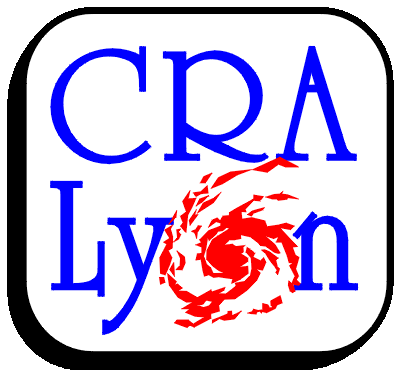Breaking News
To register to the conference, please proceed to the Registration page.Conférence grand public
Dans le cadre de ce congrès international, nous offrons une présentation grand public (ouvert à tous) :Le mercredi 9 juillet à 19 heures
La matière noire de l'univers : Un énigme bientôt résolue ?
Plus de détails ici.
Motivation
Doubtlessly, the major outstanding quests in current cosmological research are the explanation of Dark Energy and Dark Matter. Speaking in terms of cosmological models, both are problems that arise in the standard model of cosmology, i.e. if we assume that the Universe in the large is effectively modelled by a homogeneous-isotropic solution of Einstein's laws of gravitation. Furthermore, there are a number of astrophysical results that call for the existence of Dark Matter.
The hunt for dark matter is entering an exciting phase as experiments are starting to check the predictions of supersymmetric particle models. Direct searches with a number of different technologies are preparing to scale up to several tens of kilograms, while indirect ones are yielding intriguing results. The LHC will also enter the fray for supersymmetry soon, and alternative theories for dark matter are being advanced.
We may put the wide spectrum of research directions pursued to resolve these problems into essentially three categories: the first assumes that the missing sources in Einstein's equations are fundamental, e.g. one conjectures the existence of a repulsive cosmic fluid modeling Dark Energy and, furthermore, the existence of new weakly interacting massive Dark Matter particles providing challenges also for the standard model of particle physics. The second concludes that these dark components are an expression of the fact that the laws of gravitation have to be modified, so that theories other than Einstein gravity are invoked that may give rise to an explanation of the dark components in terms of effective (geometrical) sources or modifications of the gravitational laws on the respective scales of the problems. Finally, the third aims at generalizing the model priors, while remaining within the framework of general relativity.
In this conference we focus on a number of observational results and ongoing astronomical projects and astrophysical experiments that support the existence of Dark Energy and Dark Matter. We try to structure the presentation of astronomical and experimental data so that they can be confronted with model priors entering their interpretation. In this spirit we aim at backing the observational and experimental sides of the problems with theoretical approaches that help to explain the physical properties explored. Astronomical observations are, thus, mainly exposed to the third of the above-mentioned research directions. This helps to concentrate on the observational issues addressed without, however, covering all possible paths of theoretical Dark Energy search. As for Dark Matter we also cover the first of the above-mentioned research directions of finding and constraining properties of fundamental Dark Matter particles.
The Conference
This international Conference is the second event in the CRAL-Conference Series which will take place every two years in Lyon, France. The first, Chemodynamics was held in 2006. This year's conference will be organized in collaboration with the IPNL. We expect about 150 participants.
"CRAL" stands for "Centre de Recherche Astrophysique de Lyon" (Lyon Research Center for Astrophysics). The CRAL gathers expertise in many fields of astrophysics and instrumentation (cosmology, nearby galaxies, stellar interiors, compact objects, extrasolar planets, 3D spectroscopy, adaptive optics).
"IPNL" stands for "Institut de Physique Nucléaire de Lyon" (Lyon Nuclear Physics Institut). The IPNL is dedicated at studying the properties of subatomic matter components, including particle, astroparticle and nuclear physics as well as ion-aggregate interactions.


